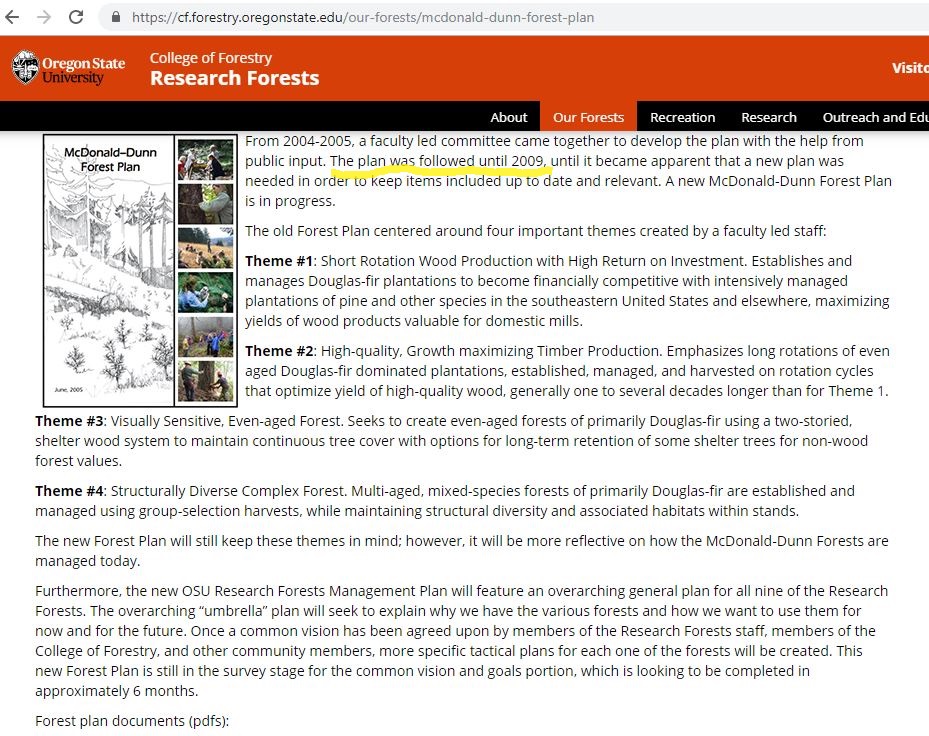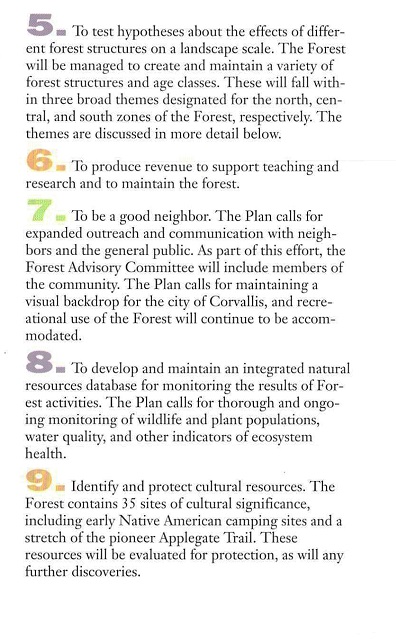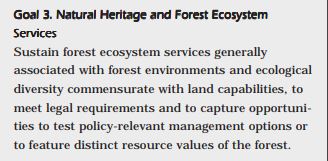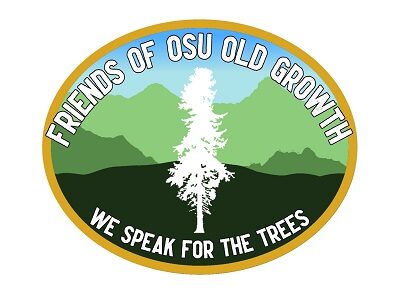If you live in Corvallis and enjoy the outdoors, chances are you’re already well acquainted with OSU’s McDonald-Dunn Research Forests. The ~11,250 acres of mostly forested land provide us with some of the best hiking, biking, running and equestrian trails in the state. If you frequent the “Mac-Dunn”, it’s hard to miss the many clearcuts and logging operations (which often shut down roads and trails for months at a time). You’ve probably assumed OSU must have a plan for how they manage the forests – after all, it’s a public university. Besides the Corvallis area forests, OSU manages eight other research forests (for a total of roughly 15,000 acres). In theory, they steward these forests on behalf of all Oregonians. In practice, not so much. In fact, you may be surprised to know that OSU’s College of Forestry has been operating without a forest plan for the past decade. Their own website makes this clear:

(from OSU College of Forestry Website)
Note the second line of the webpage: “The plan was followed until 2009, until it became apparent that a new plan was needed…A new McDonald-Dunn Forest Plan is in progress.” While I applaud them for their honesty, I think most people would be astounded to know they jettisoned their plan over TEN YEARS AGO! How does a PUBLIC institution managing ~15,000 acres of land justify operating without a plan for more than a DECADE?! It also begs the question why the nation’s “leader in forestry education” cannot develop a forest management plan in a timely manner.
While the 2009 decision to abandon the 2005 update (to the 1994 Research Forest Plan) may have been prompted by a fall in log prices, critics point out the convenient nature of operating “off script”. The absence of a formal plan means the College of Forestry can log as much as they want (or cut old growth) – without public oversight or accountability. With the subsequent rise in log prices, OSU has significantly increased logging – while conveniently ignoring their 2005 Research Forest Plan.
OSU’s failure to abide by their 2005 Research Forest Plan is unfortunate not only because of the negative impacts of the unregulated logging. It also erodes the credibility of the College of Forestry and OSU as a whole. The message to the general public seems to be: “We don’t need your input – we’re going to do what we want.” Finally, it does a great disservice to all of the OSU faculty who’ve worked hard to raise the credibility of the College and establish the planning process in the first place. This is doubly unfortunate, as the original (1994) Forest Plan and 2005 update were a showcase of impressive forestry research activities at OSU. For those who judge the College of Forestry by its clearcuts, the McDonald-Dunn Forest Plan provided a promising approach to managing these community forests.
For those who are interested in OSU’s Research Forest Plan (and it’s shifting priorities concerning old growth protection), here’s a little background. Starting back in the early 1990’s, the Dean of OSU’s College of Forestry recognized the need for a comprehensive management plan and process governing OSU’s forest lands. An interdisciplinary faculty committee was formed to work with a variety of stakeholders to:
“illuminate the concerns, future vision, and possible objectives for the forest…the Dean then formed a faculty committee to construct the forest plan itself – a plan that would describe the long-term forest condition that would be sought and the activities (especially harvests) that would occur in the next 10 years, reflecting the objectives suggested in the stakeholder discussions and those developed during further conversations between the dean and faculty.” (1)
This project was a sincere and substantial effort, with committee members meeting three hours per week for five months. The resulting plan was approved in 1994 and implemented over the following decade. Key to the plan were the nine goals that included the need to protect “special features such as old-growth Douglas-fir stands” and, “To be a good neighbor.” (2)


OSU’s Research Forest Plan was updated again in 2005. Unfortunately, the goals of the 2005 update did not include specific mention of old-growth preservation. The text concerning protection of old-growth Douglas-fir (stated in Goal #2) of the 1993 plan was removed in the 2005 update.
To the layman, Goal 3 of the 2005 update sounds like a bunch of carefully-constructed, meaningless jargon. Who is to determine what “ecological diversity commensurate with land capabilities” means – and how do you measure something so vague?! “To meet legal requirements and to capture opportunities to test policy-relevant management options” – seems like bureaucratic drivel. When College of Forestry leaders decide “meeting legal requirements” has to be stated as part of their “Natural Heritage and Forest Ecosystem Services” goal, it doesn’t send a positive, proactive message. Compared to the clear and concise text of the 1993 plan goals, goal 3 of the 2005 update seems like it was intentionally designed for ambiguity.

Regardless of the shortcomings of the 2005 update, it’s important to reflect on the greater value of OSU’s Research Forest Plan – and the development of a comprehensive planning process. It is fair to say these developments represented a revolutionary change in approach for OSU’s College of Forestry. A skeptical public and press gradually became supportive of the planning approach, even if they didn’t always agree with the resulting “harvests” in the forest. By acting with integrity and gathering public input, the 1993 committee had made a significant contribution to the College of Forestry. At the same time, it is important to point out that while the College of Forestry solicited public input, it has yet to develop a collaborative process with the public it serves. The OSU website says they expect to complete their revised forest plan in approximately six months. Let’s hope this time they follow it!
You can check out OSU’s 2005 College Forest Plan here: https://cf.forestry.oregonstate.edu/sites/default/files/mcdunn_plan.pdf
(1) Ecological Forest Management, Jerry F. Franklin, K. Norman Johnson, and Debora L. Johnson (2018)
(2) OSU’s McDonald-Dunn Research Forest Plan (1993)
